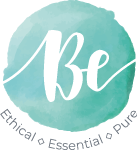Ginger essential oil is extracted via steam distillation from the plants rhizome (root) and has long been used in traditional medicine. Like other essential oils, it’s highly concentrated.
Product Details
Name: Ginger
Scientific Name: Zingiber officinale
Method of extraction: Steam distillation
Part of plant: Root
Country of origin: China
Main Components: alpha-Zingiberene (32.20%), beta-Sesquiphellandrene (11.40%)
Health
Anti-inflammatory
Some studies have shown the anti-inflammatory properties of Ginger Essential oil, especially in joints, being a good aid to rheumatic pain. Some components of the oil act directly on the immune system, modulating T lymphocyte, in order to inhibit eosinophilia.
Skincare
Ginger has antioxidant properties and has a tonic effect, being able to normalize hypopigmented scars (scars lighter than natural skin tone) \n \nAs a powerful antiseptic and cleansing agent it helps to detoxify the skin, and it's particularly effective in healing acne, minimising the rate of acne formation and clearing up triggers of breakouts. For further purifying action, use Lavender Oil.
Side effects
People who are under treatment for hair growth should avoid Ginger. A 2013 study showed that the molecule 6-Gingerol present in Ginger essential oil Inhibits Hair Shaft Growth in Cultured Human Hair Follicles. \n \nAs with any essential oil, ginger oil is very concentrated and shouldn’t be applied to the skin undiluted. If you’re concerned about a potential skin reaction, you should first test a small amount of diluted ginger oil on your skin.
How to use
Always use Ginger essential oil diluted in a carrier oil with 3 to 5% concentration. Do not ingest.
References
Miao Y, Sun Y, Wang W, et al. 6-Gingerol inhibits hair shaft growth in cultured human hair follicles and modulates hair growth in mice. PLoS One. 2013;8(2):e57226. doi:10.1371/journal.pone.0057226

